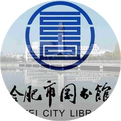Call Number: R281.3/48
Author Biography
Li Shizhen (1518–1593), styled Dongbi, later self-named Binhushanren, was a great medical scientist of ancient China from Qizhou (now Qichun County, Huanggang City, Hubei Province) during the Ming Dynasty. He authored the renowned pharmacological work, Ben Cao Gang Mu (The Compendium of Materia Medica). Li Shizhen also studied pulse diagnosis and the Eight Extraordinary Meridians, writing Binhushan Pulse Studies and Examination of the Eight Extraordinary Meridians, which have been valued by later generations of physicians. In clinical practice, Li Shizhen advocated the principle of “differentiating diseases and syndromes, using appropriate medications,” often modifying ancient formulas, creating new prescriptions, or utilizing effective folk remedies, achieving significant results. He also proposed the theory that “the Mingmen (Gate of Life) is located between the two kidneys,” which was later developed by Zhao Xianke, who emphasized that “the brain is the residence of the Yuan Shen (Original Spirit),” affirming the brain’s central role in the body. Li Shizhen authored several other works, including Examination of the Mingmen, Collection of Simplified Formulas, White Flower Snake Transmission, and Verification of Pulse Techniques, all of which are now lost. The book Ben Cao Gang Mu was collaboratively compiled by Li Shizhen, his sons, and disciples, with his second son, Li Jianyuan, illustrating the book, making it a collective work centered around Li Shizhen.
Content Summary
The Hand-Drawn Illustrated Edition of the Compendium of Materia Medica is based on the most authoritative ancient edition from Jinling, adhering to the principle of extracting the essence of ancient wisdom for modern practical use. It simplifies and selects the essence, preserving commonly used materia medica and effective compound formulas, vividly reproducing the essence of the world’s foremost pharmacopoeia, guiding contemporary readers in understanding materia medica. This book mimics the style of the ancient Jinling edition, meticulously illustrating over five hundred color images that vividly and realistically depict the plant forms of more than four hundred medicinal materials, allowing readers to accurately identify them. It also clearly explains some of the traditional Chinese medicine theories from the original text through images, helping readers without a background in TCM easily understand Li Shizhen’s Ben Cao Gang Mu. This book is not only a household pharmacopoeia but also a treasured choice for enthusiasts of traditional Chinese medicine research.

